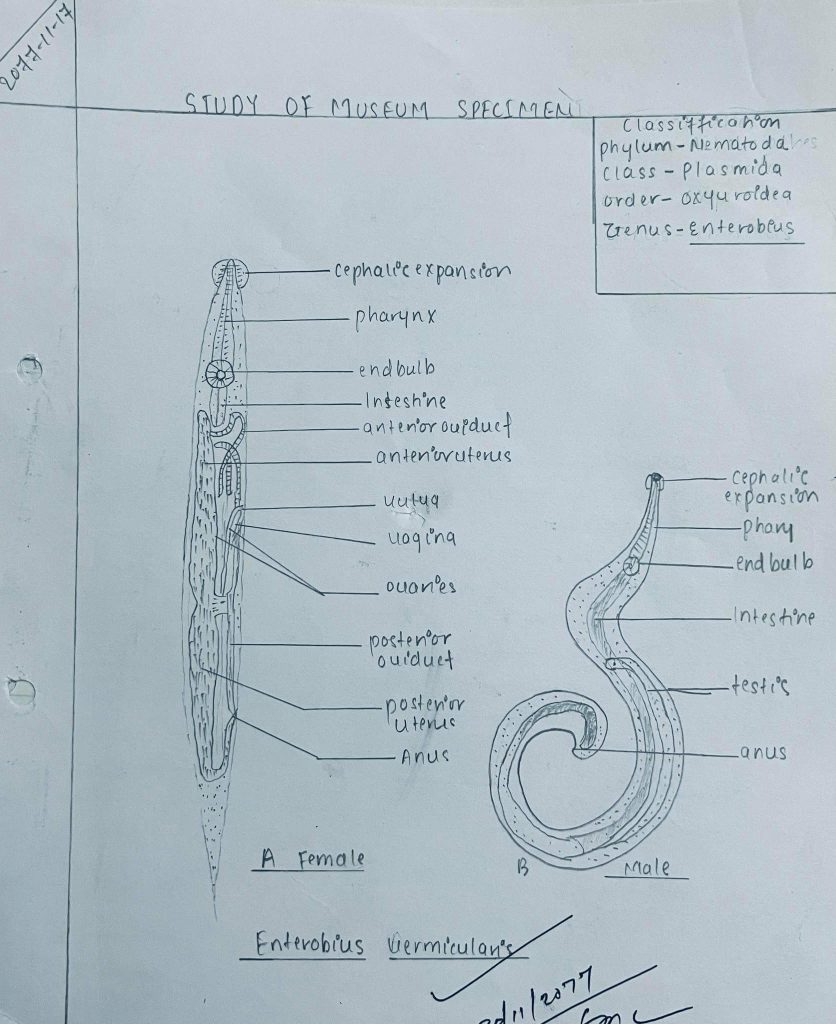Comments of Enterobius Vermicularis
Distribution:
Enterobius Vermicularis is worldwide in distribution and is specially found in Europe, U.S.A, India, Chile, Africa and Canada.
Habit and Habitat:
Enterobius Vermicularis is cosmopolitan, but more common in Europe and America. In some communities 40-100 percent of the population may be infected.
General Character:
1. Enterobius Vermicularis is commonly known as pin-worm.
2. It has three small lips and a pair of cephalic expansion at the anterior end.
3. Female is 10mm long with a long pointed tail.
4. Fertilized females make nightly trips to the annus to lay eggs or they may creep out of the anus and lay eggs.
5. Eggs are well advanced when laid, each contains a tad pale like Juvenile.
6. Enterobius causes pin-worm disease, their movement causes intense itching of the anus, inflammation of mucous membrane of colon.
Economic Importance:
It causes enterobiasis in humans.
Diagram of Enterobius Vermicularis

Enterobius vermicularis
